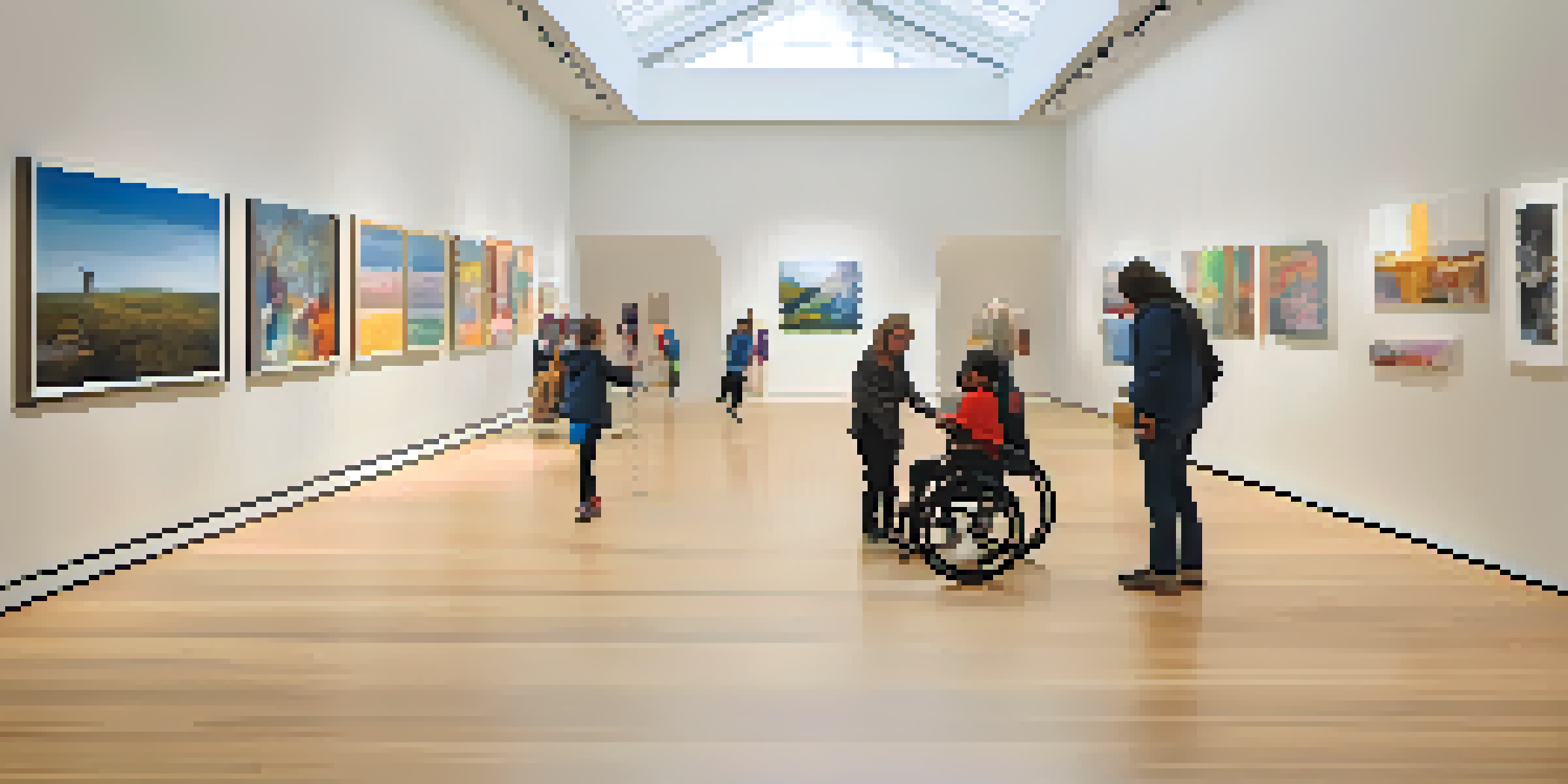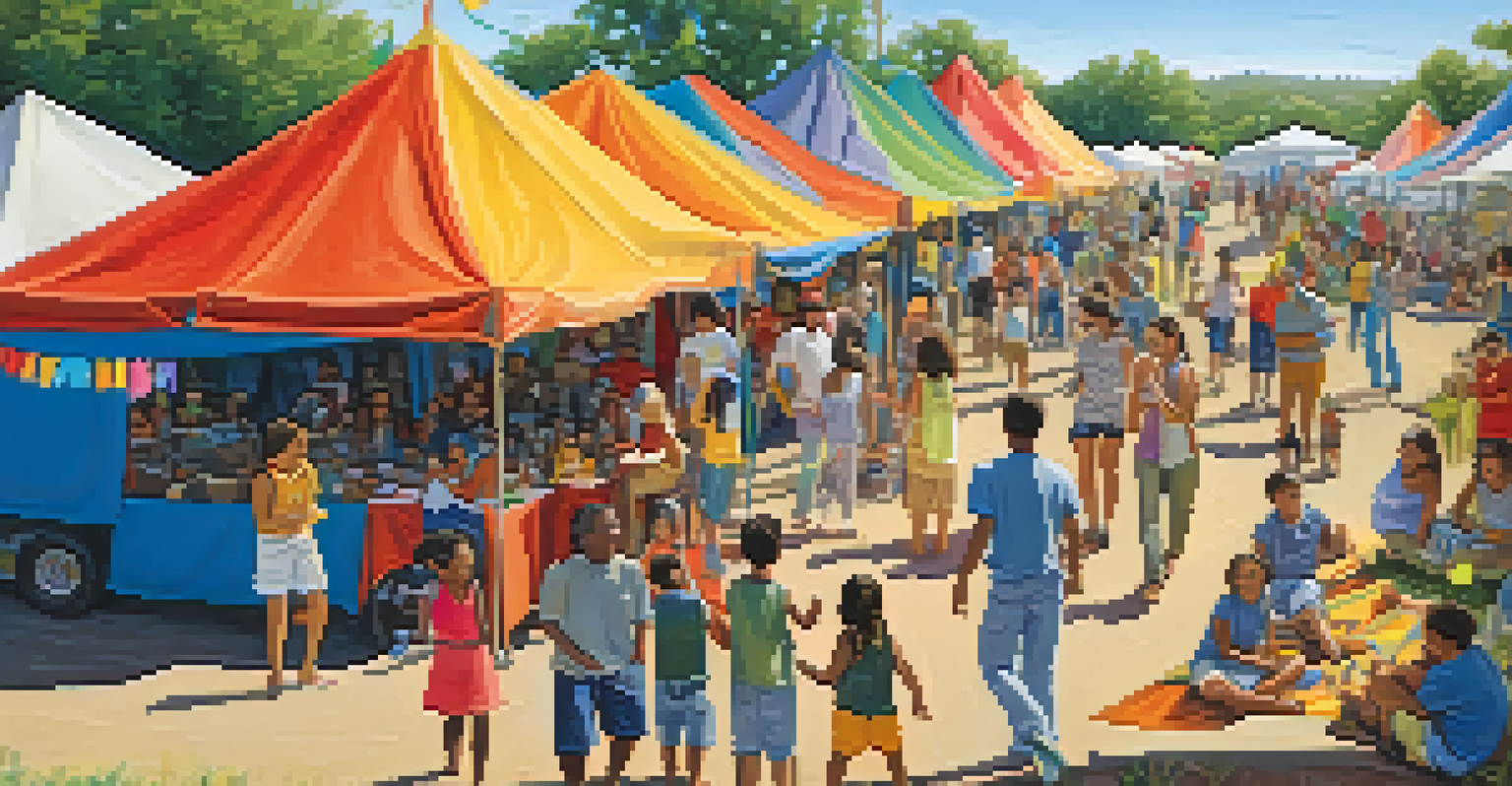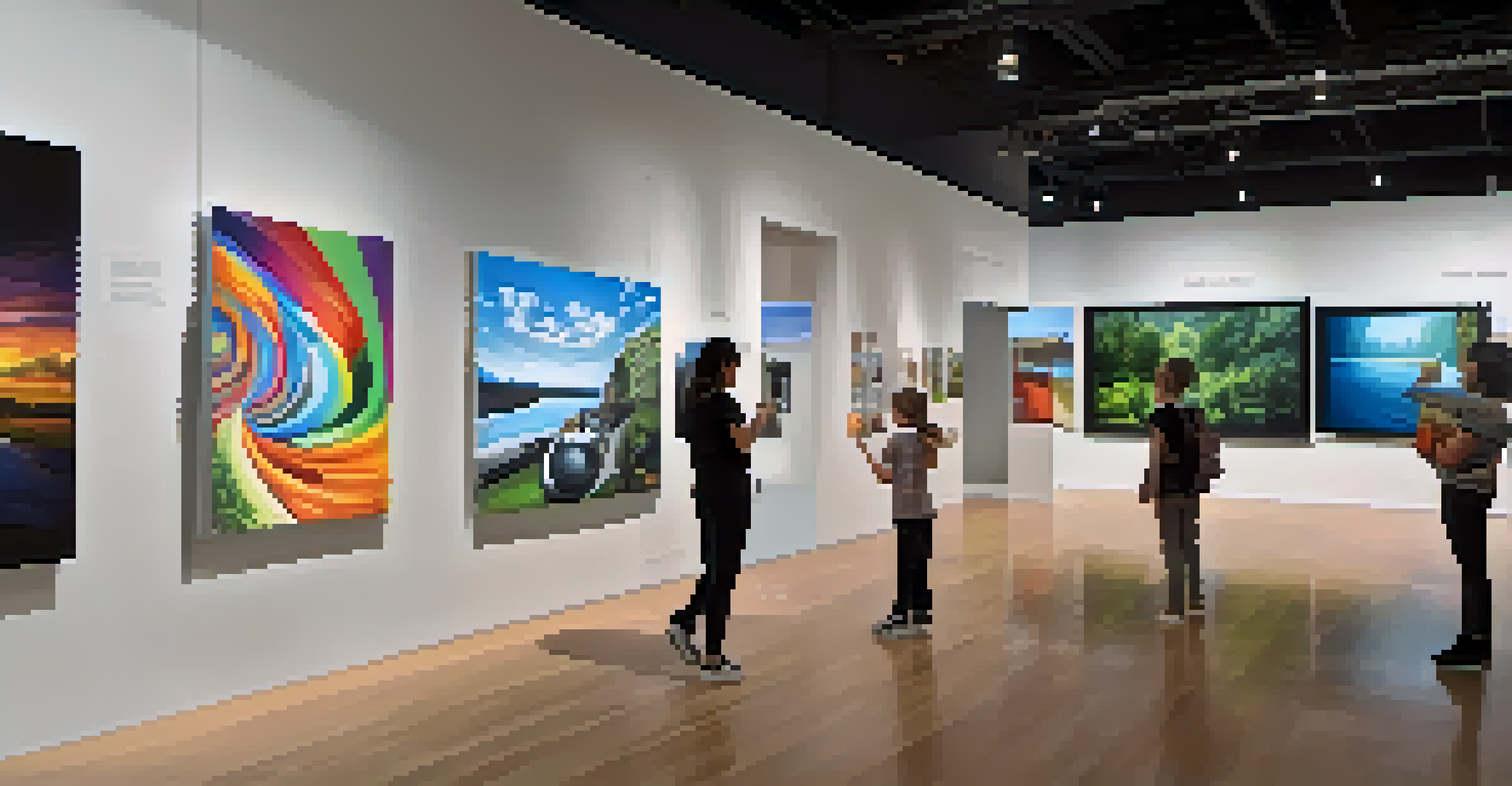Inclusive Design Principles for Art Spaces

Understanding Inclusive Design and Its Importance
Inclusive design is about creating environments that allow everyone to participate fully, regardless of their abilities or backgrounds. In art spaces, this principle ensures that all visitors can experience creativity without barriers. It’s not just about compliance with regulations, but about celebrating diversity and fostering a sense of belonging.
Design is not just what it looks like and feels like. Design is how it works.
Imagine walking into an art gallery where every element—from the layout to the signage—invites you in rather than pushing you away. This is the essence of inclusive design; it transforms spaces into welcoming havens for all. By prioritizing inclusivity, art spaces can become platforms for dialogue, understanding, and community engagement.
Moreover, inclusive design can enhance the overall experience for everyone, not just those with disabilities. When we design with empathy, we create environments that are more functional and enjoyable for all visitors, encouraging more people to engage with the arts and each other.
Creating Accessible Physical Spaces
One of the first steps in inclusive design is ensuring that the physical space is accessible to everyone. This means considering wheelchair ramps, wide doorways, and clear pathways that accommodate various mobility needs. Additionally, tactile surfaces and braille signage can help guide visually impaired visitors, making navigation easier and more intuitive.

Think about how frustrating it can be to navigate a space that isn’t designed with accessibility in mind. Imagine a visitor in a wheelchair facing stairs instead of a ramp, or someone with a visual impairment unable to read the exhibition signs. By proactively addressing these challenges, art spaces can create a welcoming environment for all.
Inclusive Design Enhances Access
Creating accessible physical spaces ensures that everyone, regardless of ability, can fully engage with art.
Moreover, incorporating sensory-friendly areas can cater to neurodiverse individuals, allowing them to enjoy the art at their own pace. By considering a variety of needs, art spaces can transform into inclusive sanctuaries where everyone feels valued and engaged.
Utilizing Diverse Artistic Expressions
Art is a powerful medium for expressing diverse cultures, experiences, and identities. By showcasing work from a wide range of artists, including those from underrepresented communities, art spaces can promote inclusivity and challenge traditional narratives. This diversity not only enriches the visitor experience but also fosters a greater understanding of different perspectives.
Inclusion is not a matter of political correctness. It is the key to growth.
For example, a gallery that features art by Indigenous artists or LGBTQ+ creators opens up conversations about identity, history, and representation. These artistic expressions can resonate deeply with visitors, creating connections that go beyond the visual experience. When people see themselves represented in art, it cultivates a sense of belonging and validation.
Moreover, encouraging participatory art practices—where visitors can contribute to the creation of art—can further enhance engagement. This not only democratizes the artistic process but also emphasizes that everyone has a voice and a story worth sharing.
Implementing Inclusive Programming and Events
Inclusive design goes beyond the physical space; it also encompasses the programming and events hosted within it. Art spaces should consider offering workshops, lectures, and performances that cater to diverse audiences and reflect a variety of cultural backgrounds. This approach ensures that everyone has the opportunity to learn and participate in the arts.
For instance, hosting a family-friendly art day with activities designed for all ages and abilities can draw in a wider audience. This not only increases foot traffic but also builds community ties and encourages collaborative experiences. Accessibility in programming helps foster a sense of ownership and pride among participants.
Diverse Art Promotes Understanding
Showcasing diverse artistic expressions fosters connections and a sense of belonging among visitors.
Additionally, creating outreach programs for schools or community organizations can introduce the arts to those who might not otherwise engage with them. By bringing art to the community, spaces can break down barriers and ignite a passion for creativity across diverse demographics.
Training Staff for Inclusivity Awareness
An essential component of inclusive design is ensuring that staff members are trained to understand and embrace inclusivity. This includes learning about different abilities, cultural sensitivities, and effective communication strategies. When staff are well-equipped to handle diverse visitor needs, they can create a more welcoming atmosphere.
Consider the impact of a knowledgeable staff member who recognizes the needs of a visitor with a disability or someone who speaks a different language. Their ability to assist effectively can transform a potentially frustrating experience into a positive one. Training should be ongoing, fostering an environment where staff feel empowered to learn and adapt.
Moreover, creating a culture of inclusivity within the team can lead to more innovative ideas for engaging diverse audiences. When staff members from various backgrounds collaborate, they can share unique perspectives that enhance the art space's outreach and programming.
Gathering Feedback and Making Improvements
To truly embody inclusive design, art spaces must actively seek feedback from their visitors. This can be accomplished through surveys, focus groups, or informal conversations. Listening to the experiences and suggestions of diverse audiences can help identify areas for improvement and ensure that all voices are heard.
Imagine a visitor leaving a gallery feeling unheard or unseen; that feedback is invaluable for future changes. By creating a culture of open dialogue, art spaces can demonstrate their commitment to inclusivity and continually evolve to meet the needs of their communities. This proactive approach signals to visitors that their experiences matter.
Feedback Fuels Continuous Improvement
Actively seeking visitor feedback helps art spaces evolve and better meet the needs of their communities.
Additionally, sharing the outcomes of feedback initiatives can help build trust and demonstrate accountability. When visitors see tangible changes made as a result of their input, it reinforces the idea that their opinions are valued, fostering a deeper connection between the space and its audience.
Embracing Technology for Inclusive Experiences
Technology can play a significant role in enhancing inclusivity in art spaces. From virtual tours to interactive exhibits, innovative solutions can make art more accessible to a broader audience. For instance, offering audio guides or augmented reality experiences can cater to individuals with different sensory preferences.
Picture a visitor who cannot physically visit an art space but can still explore its collections through a virtual reality headset. This not only expands access but also invites new audiences to engage with the arts in ways that were previously unimaginable. Technology can bridge gaps and connect communities, making art more inclusive.

Moreover, using social media platforms to share diverse stories and experiences can amplify voices that may otherwise go unheard. By leveraging technology, art spaces can create inclusive narratives that resonate with a global audience, thereby enriching the overall cultural conversation.